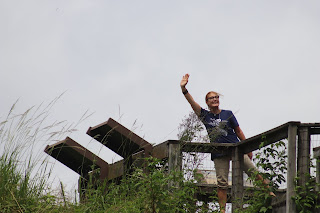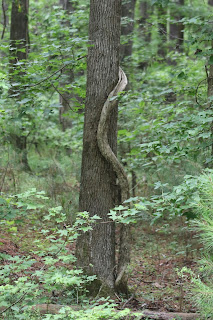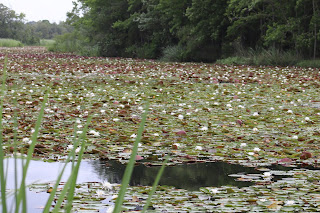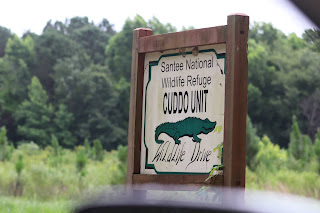Santee National Wildlife Refuge
June 18, 2021
Santee National Wildlife Refuge
Kathy and I opted to drive to Winston-Salem to attend the memorial service for my mother Marta, mostly so that we could bring along our dog Jack. It is a fairly decent drive so after spending the first night in Miami after having attended the Beyond Van Gogh immersive exhibit, we spent the nest day driving and ended up spending the night in Santee, South Carolina.
As we usually do when traveling, we try to stop along the way, to both break up the drive as well as explore the areas that we are passing through and in Santee, we wanted to check out the Santee National Wildlife Refuge. The refuge stretches for eighteen miles along the north shore of Lake Marion in Summerton and is divided into four distinct areas (Bluff, Dingle Pond, Pine Island, and Cuddo).
It covers 15,095 acres since its establishment in 1942 to alleviate the loss of natural waterfowl and wildlife habitat caused by the construction of hydro-electric projects on the Santee and Cooper Rivers. From open waters to closed hardwood canopies - from freshwater marshes to cultivated fields - from cypress swamps to upland pines - and practically everything in between - Santee has them all. Since the key to wildlife diversity is habitat diversity, it's easy to understand why so many different species call this refuge home.
Significant waterfowl concentrations winter on the refuge as do a number of
other birds of interest. Santee National Wildlife Refuge over-winters the
largest group of Canada geese belonging to the Southern James Bay population in
the State. Nesting bald eagles and an abundance of osprey are evident along
with several other birds of prey.
Birds are not the only residents of Santee Refuge. White-tailed deer, wild
turkey and other woodland creatures live alongside raccoons, alligators and
other reptiles and amphibians found around the ponds and marshes. There is also
a large Indian mound with great historical significance located at the refuge.
The large hill located on the Bluff Unit at Santee National Wildlife Refuge is known as the Santee Indian Mound and Fort Watson. The Santee Indians were part of the Mississippian culture, living along the Santee River for thousands of years. The mound itself is estimated to at least 1,000 years old. It served as the ceremonial site and a burial for the Native American tribe. The site at Scott's Lake is the largest such mound discovered on the coastal plain to this date.
The Santee tribe numbered approximately 3,000 around 1650 when the early Spanish were exploring the area. By 1715, the tribe had been reduced to around 500 people. The drop is attributed to diseases brought by the early settlers. Within 150 years of first European contact, the tribe had been extirpated. The mound took on a new meaning at the end of the 18th century, when it was re-purposed by British troops as an outpost, which they named Fort Watson after the British Colonel, John Watson, who directed the construction of the fort.
The Mound was the ideal location for such a fort since it provided an elevated vantage point overlooking the Santee River and the road to Charleston. The fort was part of a chain of British strong points that stretched across South Carolina which included Fort Mott, Granby, Ninety Six, Camden and Charleston. On February 28, 1781, General Thomas Sumter's partisans unsuccessfully attempted to take the fort.
A new campaign was led by General Francis “Swamp Fox” Marion and his Lieutenant Colonel, Harry "Light Horse" Lee. Major Matham of Marion's Militia proposed to build towers that could fire down into the fort. The Americans pushed forward and after eight days, forced the surrender of Fort Watson. The fall of Fort Watson was an important link in the chain of events that made the British authorities abandon the back country of South Carolina. Both the Indian Mound and Fort Watson are now protected by the U.S. Department of the Interior, Fish and Wildlife Service at the Santee NWR.
https://www.fws.gov/refuge/santee/






































0 Comments:
Post a Comment
<< Home